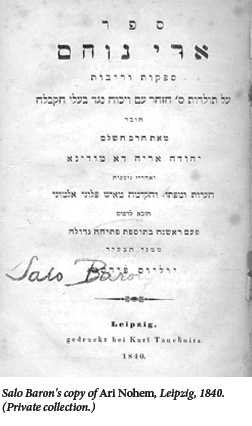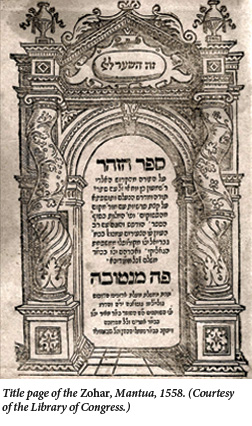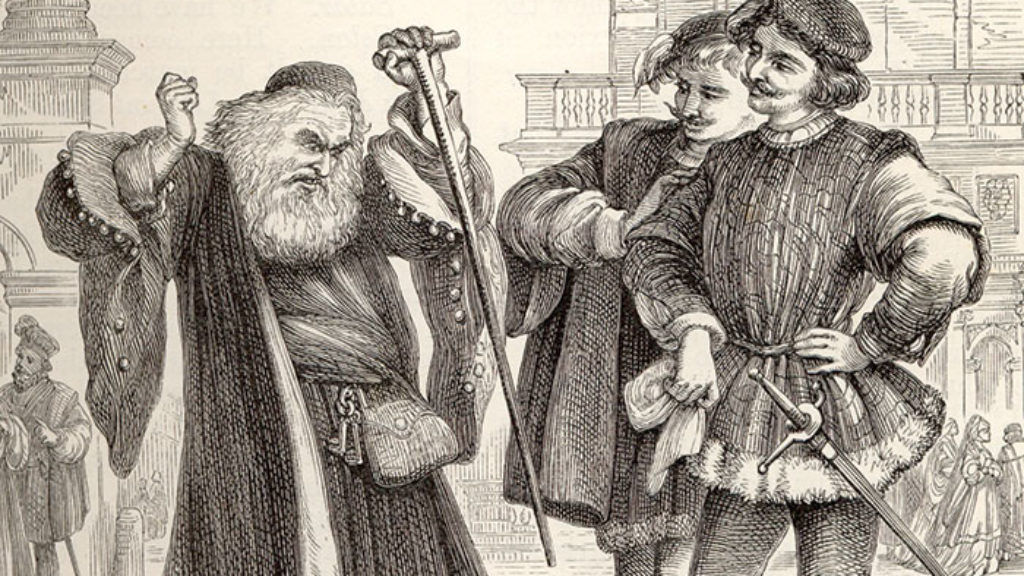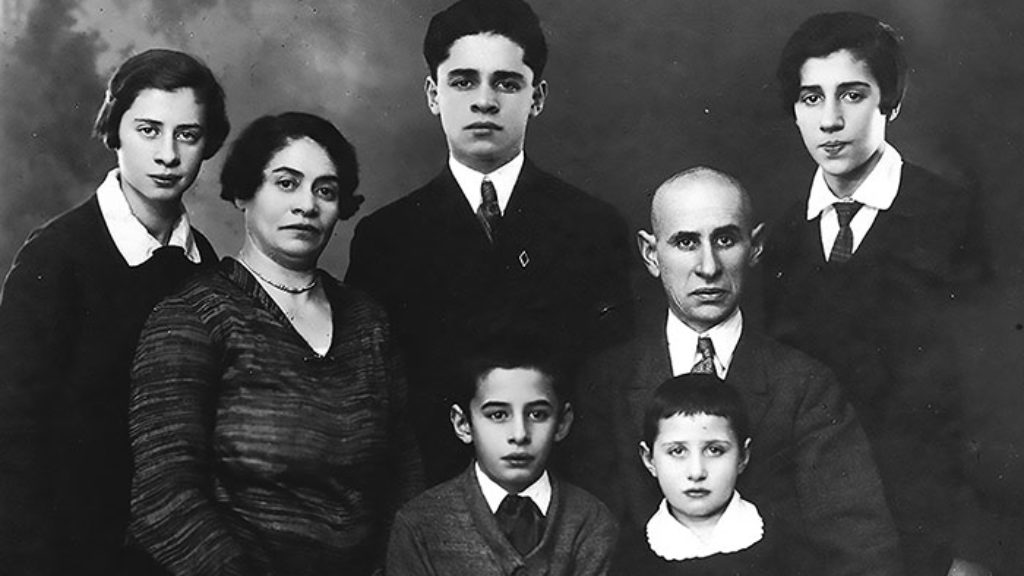Leon’s Roar
The Scandal of Kabbalah is a study of Ari Nohem (The Roaring Lion), a salvo against kabbalism that was completed by its author, the Venetian rabbi and scholar Leon Modena, in 1639, but did not appear in print until 1840. This may very well have been, at least at the outset, for lack of trying. The book’s prolific author perhaps refrained from publishing it, Yaacob Dweck tells us, on account of “the expense of printing, the controversial contents of the work, and the desire to maintain a closer hold on his readers.” He knew that what he had to say about the Zohar and other kabbalistic works would displease a great many of them.
 Once viewed as texts that ought to be the private preserve of qualified adepts, the writings of the kabbalists were by Modena’s day readily available in print and even in translation. And they held sway. Early modern Jews had begun to treat the Zohar in particular, as Dweck notes, “as a source of legal authority” and “a foundational component of the Oral Torah.” Modena, for his part, sought to counteract this tendency, primarily by means of historical research. But his book, which circulated only in manuscript for two hundred years, did not achieve its main purpose. “In Modena’s life,” Dweck concludes, and even “in his death, Ari Nohem was a stunning failure.” Yet The Scandal of Kabbalah gives us good reason to question whether this is not something of an overstatement.
Once viewed as texts that ought to be the private preserve of qualified adepts, the writings of the kabbalists were by Modena’s day readily available in print and even in translation. And they held sway. Early modern Jews had begun to treat the Zohar in particular, as Dweck notes, “as a source of legal authority” and “a foundational component of the Oral Torah.” Modena, for his part, sought to counteract this tendency, primarily by means of historical research. But his book, which circulated only in manuscript for two hundred years, did not achieve its main purpose. “In Modena’s life,” Dweck concludes, and even “in his death, Ari Nohem was a stunning failure.” Yet The Scandal of Kabbalah gives us good reason to question whether this is not something of an overstatement.
A brilliant and versatile writer, Modena had his fingers in many different pots and sometimes couldn’t prevent them from getting stuck in the wrong places. When he wasn’t busy preparing Hebrew versions of his Italian sermons, vernacular explanations of Jewish rites, a defense of rabbinic Judaism, or his unprecedentedly revealing autobiography, he spent what he himself admitted was too much of his time gambling (which he once suggested, in a responsum, was not really a sin). From these and other creditable and discreditable pursuits he was often distracted by a difficult family life. In addition to the infant deaths of two children, he lost his three adult sons: Mordecai, who died by inhaling fumes during alchemy experiments; Zebulun, who was murdered by a Jewish gang over a Jewish woman; and Isaac, whom he banished to the Levant and who traveled as far as South America.
When it was not tragic, Modena’s family life sometimes served as one of the stimuli for his writing. Ari Nohem, in fact, grew out of arguments with friends and family, including Modena’s son-in-law, Jacob Levi, and his prized student, Joseph Hamiz, over the antiquity of the Zohar. Disputing the kabbalists, who attributed the text to the 2nd-century Palestinian rabbi Simeon bar Yohai, Modena tried to show that it was a much more recent composition. He maintained, for instance, as Dweck notes, that “the very Talmudic passage repeatedly invoked by kabbalists about Simeon bar Yohai and the writing of the Zohar did not support their claim.” How could Simeon bar Yohai have written the Zohar in the cave in which the Talmud reports him to have been confined with his son for many years, Modena asked, if he had access to “no paper, nor ink, nor pen with which to write.” And even if he and his son had had these implements, they would not have been able to use them. “For the rabbis, of blessed memory, recounted that they were sitting in sand, naked up to their necks . . . If so, they certainly did not write.”
Another reason for rejecting the antiquity of the Zohar was its anachronisms. Among other things, “Modena pointed to references to liturgical customs that were not shaped until hundreds of years after Simeon bar Yohai’s lifetime.” And why, he asked, if the Zohar had been written by an important early rabbi, did the other sages of his time never make any references to it or engage in kabbalistic activity?
Such doubts about the central kabbalistic text had been voiced before by others. What truly “distinguished Modena’s criticism of the Zohar from prior treatments” was his presentation of a “coherent theory about the origins of the book.” This theory was based on information that Modena gleaned from the testimony of the 14th-century Isaac of Acre cited in Abraham Zacut’s 16th-century chronicle entitled Sefer Yuhasin (Book of Genealogy). Isaac had heard from widow of the 13th-century “redactor” of the Zohar Moses de Leon, living in Castile, that her husband had some years earlier written the Zohar himself “and that he had confessed to her that he attributed the work to earlier scholars in order to increase its value.” Zacut himself did not lend credence to this story but, a century later, Modena certainly did.
 He did not do so out of unmitigated hostility to the Zohar, Dweck is at pains to emphasize. “Modena insisted upon its value as a hermeneutic key to quandaries of biblical interpretation or as an exhortative tool to improve the moral conduct of his listeners.” Up until his death, “it remained a formative textual presence in Modena’s intellectual landscape.” His goal was not to discredit the Zohar but to dislodge it from the position of legal power to which it had wrongly been elevated.
He did not do so out of unmitigated hostility to the Zohar, Dweck is at pains to emphasize. “Modena insisted upon its value as a hermeneutic key to quandaries of biblical interpretation or as an exhortative tool to improve the moral conduct of his listeners.” Up until his death, “it remained a formative textual presence in Modena’s intellectual landscape.” His goal was not to discredit the Zohar but to dislodge it from the position of legal power to which it had wrongly been elevated.
In his effort to cut the Kabbalah down to size, Modena invoked Maimonides. He assailed the kabbalists both for their harsh critiques of the “Great Eagle” and for undertaking what he considered to be utterly contemptible attempts to appropriate him for their own purposes. Modena was particularly upset by the efforts of Elijah of Genazzano, Meir ibn Gabbai, and Gedalya ibn Yahya to portray Maimonides as having undergone a deathbed conversion to the Kabbalah. He “exploded in anger about this legend,” Dweck writes, and felt that “the kabbalization of Maimonides was worse than Kabbalah itself.” Modena frequently mined the Guide for the Perplexed for rationalist arguments to use against the Kabbalah since, among other things, it constituted “a common point of reference” with his student Joseph Hamiz, a man whom he strenuously endeavored to cure of his “assiduous devotion to Kabbalah.”
Ari Nohem missed this mark. Not only was Modena unsuccessful in his “attempt to convince its primary addressee of the folly of Kabbalah,” but he himself was, despite his best efforts, subjected in the end to the same kind of treatment as Maimonides. Although he anticipated and sought to preempt the possibility of reports of his own deathbed conversion to Kabbalah, they nonetheless surfaced in the 18th century. According to one of them, he witnessed a dying baby recite the Shema. Recognizing that the child had the soul of an old sage in him, Modena became a believer in the kabbalistic doctrine of the transmigration of souls (gilgul ha-neshamot).
As far as Modena was concerned, the misrepresentation of Maimonides was by no means the only untoward result of the spread of Kabbalah. He also worried about the menace posed by kabbalistic literature when it was appropriated by Christians to identify alleged Christological aspects of Jewish texts and utilized, especially by apostates, for missionary purposes. In his fierce opposition to the very existence of Christian Kabbalah, Dweck shows, Modena was prepared to employ any argument to serve his purposes. At times, he even went so far as to emphasize the value of Kabbalah and to posit that it “was and should remain the esoteric secrets of the Jews, a position he found anathema elsewhere.”
Dweck concludes his book with a re-evaluation of the reception of Ari Nohem, one in which he explicitly takes issue with scholars who have underestimated the book’s historical importance and influence on account of its having remained in manuscript for two centuries. He comprehensively and convincingly shows that “between its composition and its printing, Ari Nohem was read by a small circle of learned elites, mostly Jews, who were interested in the antiquity of Kabbalah.” And after it finally appeared in print, he goes on to show, in 1840, it “left a deep impression on several Jewish thinkers whose positions on Kabbalah spanned from profound respect to unbridled hatred.” Early modern kabbalists such as “Elijah Benamozegh and Isaac Haver Wildmann subjected [Ari Nohem] to searing criticism.” On the other hand, Abraham Geiger, one of the founders of Reform Judaism, and important Eastern European Jewish intellectuals such as Isaac Baer Levinsohn and Moshe Leib Lilienblum “continued to draw inspiration from Ari Nohem.”
Dweck has marshaled considerable evidence that Modena’s cultural criticism had a broad and important impact throughout the centuries that elapsed after the completion of Ari Nohem. It is thus something of a surprise to read his declaration in the book’s epilogue that Modena was “a stunning failure.” That he did not achieve his most basic aims is clear enough. His book had indeed very little success “in opposing the increasing popularity of Kabbalah in the decades and centuries after Modena’s death.” Yet today, almost four hundred years later, Ari Nohem continues, as it has for a long time, to intrigue scholars, please readers, and maintain its relevance in discussions of the Kabbalah. Dweck’s meticulous and illuminating study has itself breathed new life into the Ari Nohem. It gives one reason to hope that it will finally become available in an English translation and that Yaacob Dweck will make the publication of such a volume one of his future projects.
Suggested Reading

Sitting with Shylock on Yom Kippur
The poet Heinrich Heine imagined the merchant of Venice attending Neilah, the final service of Yom Kippur, but I find him earlier in the day, at Mincha, and we are listening together to the story of another Jew among Gentiles, bitter at being compelled to show mercy.
What a Friend We Have in Jesus
A new crop of books about Jesus, by Jews and for Jews.

A Stolen Seat
“Good Shabbos—you’re sitting in my seat” takes on a whole new meaning when it’s your brother- in-law talking. From a Russian Jewish diary, with an introduction by Alice Nakhimovsky and Michael Beizer.
Letters, Fall 2020
The Coffee a Good Schmooze Demands, Unjustified Resentment, Whose True Voice?, and Yesterday's Today
Comments
You must log in to comment Log In